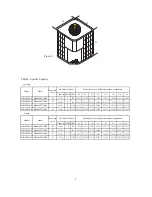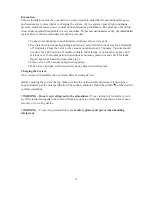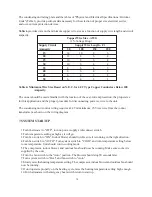
10
Evacuation
All new installations must be evacuated to a deep vacuum in order that all noncondensible gases
and moisture are removed prior to charging the system. Air in a system causes high condensing
pressure, which increases power consumption and reduces performance. The presence of moisture
in a system can render it inoperable in a very short time. Proper evacuation assures a dry, uncontaminated
system. Here is the recommended evacuation procedure:
1.Connect vacuum pump to both liquid and suction valve service ports.
2.Evacuate the interconnecting tubing and indoor coil to 500 microns or less for a minimum
of 30 minutes. Close the valve to the vacuum pump and wait 15 minutes. Vacuum should
not rise above 800 microns. If unable to obtain 500 microns, or vacuum rises above 800
microns over 15 minutes period, discontinue evacuation, pressurize and check for leaks.
Repair any leaks found and repeat the step 2.
3.Close valve to the vacuum pump and stop pump.
4.When sure of a tight, well evacuated system, charge with refrigerant.
Charging the System
(For systems with capillary tube or fixed orifice metering device)
Before checking the system charge, make sure that the outdoor unit and indoor coil must be an
approved match per the unit specification. The indoor conditions should be within 2 F of the desired
comfort conditions.
! WARNING
-
Do not vent refrigerant to the atmosphere
! It is a violation of federal law to do
so. If the refrigerant needs to be removed from a system to correct the charge inside, always use a
recovery or recycling device.
! WARNING
- To prevent personal injury,
wear safety glasses and gloves when handling
refrigerant
.
Summary of Contents for HR18D2VAR
Page 1: ...No 0010578573 HR18D2VAR HR24D2VAR HR30D2VAR 13 SEER 1 5 to 3 0 Ton HR36D2VAR ...
Page 13: ...5 5 ...
Page 17: ...HR18 36D2VAR 15 YL GR ...
Page 18: ...Made in P R C ...




































